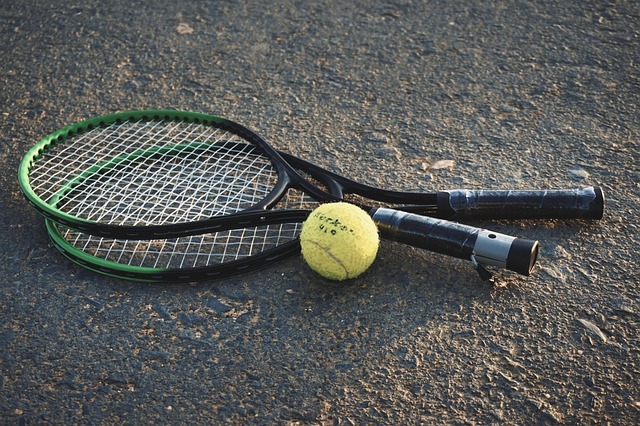Beyond the Court: The Hidden World of Tennis Ball Manufacturing
Tennis, a sport beloved by millions worldwide, relies on a seemingly simple yet crucial piece of equipment: the tennis ball. While spectators focus on the electrifying rallies and powerful serves, few consider the intricate journey of the tennis ball from factory to court. This article delves into the fascinating realm of tennis ball manufacturing, exploring the meticulous processes, technological advancements, and environmental considerations that shape this essential component of the game.

The Core of Excellence: Rubber Compound Formulation
At the heart of every tennis ball lies a carefully formulated rubber core. This isn’t your average rubber; it’s a specialized compound designed to meet the exacting standards of professional play. The process begins with the selection of natural and synthetic rubbers, each chosen for specific properties that contribute to the ball’s performance.
The rubber compound must strike a delicate balance between resilience and compression. Too soft, and the ball loses its bounce too quickly; too hard, and it becomes unpredictable and potentially dangerous. Chemists and engineers work tirelessly to perfect the recipe, adjusting the proportions of various ingredients to achieve the ideal mix.
Additives play a crucial role in this formulation. Sulfur is incorporated to facilitate vulcanization, a process that creates cross-links between polymer chains, enhancing the rubber’s strength and elasticity. Other components, such as accelerators and antioxidants, are added to improve the curing process and extend the ball’s lifespan.
The exact composition of the rubber compound is a closely guarded secret within each manufacturing company. This proprietary blend is what sets different brands apart, with each claiming unique performance characteristics that cater to various playing styles and court surfaces.
Shaping the Sphere: Molding and Pressurization
Once the rubber compound is prepared, it’s time to give the tennis ball its iconic shape. The molding process is a critical step that determines the ball’s uniformity and consistency. Modern manufacturing facilities use precision machinery to ensure each core meets stringent size and weight specifications.
The rubber is first extruded into long strips, which are then cut into small pellets. These pellets are preformed into hemispheres using specialized molds. Two hemispheres are then brought together in a final molding process, where heat and pressure fuse them into a single, seamless sphere.
After molding, the cores undergo a pressurization process. This involves injecting a specific amount of nitrogen gas into the ball through a tiny hole. The pressurization is crucial for achieving the correct bounce and feel. The amount of pressure is carefully calibrated to meet the requirements set by tennis governing bodies for different levels of play.
Interestingly, the pressurization process is also what gives tennis balls their limited shelf life. Over time, the nitrogen slowly escapes through the rubber, causing the ball to lose its bounce. This phenomenon has led to ongoing research into developing more sustainable solutions, such as rechargeable tennis balls or alternative core materials that maintain pressure for longer periods.
The Fuzzy Exterior: Felt Application and Dying
The distinctive fuzzy exterior of a tennis ball is more than just aesthetic; it’s a crucial component that affects the ball’s aerodynamics and interaction with the court surface. The felt covering is typically made from a blend of wool and nylon fibers, carefully selected for durability and performance.
The felt-making process begins with the preparation of the fiber blend. The mixture is carded to align the fibers and then felted using heat, moisture, and pressure. This creates a dense, uniform material that can withstand the rigors of play while maintaining its texture.
Applying the felt to the rubber core is a delicate operation. The felt is cut into a dumbbell shape, which allows it to wrap around the sphere with minimal overlap. Adhesive is applied to the rubber core, and the felt is carefully positioned and pressed onto the surface. The ball then goes through a series of rollers that ensure a smooth, even application without air bubbles or wrinkles.
The iconic optic yellow color of modern tennis balls is the result of a dyeing process. This bright hue, officially adopted in 1972, was chosen for its high visibility on television broadcasts. The dye is typically applied to the felt before it’s attached to the ball, ensuring deep, consistent coloration.
Quality Control: Ensuring Consistency and Performance
In the world of professional tennis, where millimeters can make the difference between a win and a loss, consistency is paramount. Tennis ball manufacturers employ rigorous quality control measures to ensure that every ball meets the exacting standards set by regulatory bodies such as the International Tennis Federation (ITF).
Each stage of the manufacturing process involves multiple checks and tests. The rubber cores are weighed and measured to ensure they fall within acceptable tolerances. The pressurization is verified to meet specifications for different types of play, from recreational to grand slam tournaments.
Once the balls are fully assembled, they undergo a battery of tests. Bounce tests measure the rebound height under controlled conditions. Compression tests assess the ball’s firmness and resilience. Some manufacturers even employ high-speed cameras and computer analysis to evaluate the uniformity of the ball’s shape and surface texture.
Perhaps the most critical test is the approval process by the ITF. Balls must meet specific criteria for size, weight, deformation, and bounce to be certified for official use. This certification ensures that players at all levels can rely on consistent performance, regardless of the brand or batch of balls they use.
Environmental Considerations and Future Innovations
As awareness of environmental issues grows, the tennis ball industry is facing new challenges and opportunities. The traditional tennis ball, with its rubber core and felt covering, is not easily recyclable. Millions of balls end up in landfills each year, contributing to environmental waste.
In response, manufacturers are exploring more sustainable options. Some companies are developing biodegradable felt coverings made from natural fibers. Others are investing in recycling programs that repurpose old tennis balls into surfaces for playgrounds or running tracks.
Technological innovations are also shaping the future of tennis ball manufacturing. Advanced materials science is leading to the development of more durable cores that maintain their pressure for longer periods. This not only improves the lifespan of the balls but also reduces waste.
Smart tennis balls equipped with sensors are on the horizon, promising to revolutionize training and performance analysis. These high-tech balls could provide real-time data on spin rates, speed, and trajectory, offering players and coaches unprecedented insights into technique and strategy.
The Unsung Heroes of Tennis
Tennis ball manufacturing stands as a testament to the intricate relationship between science, technology, and sport. From the carefully guarded rubber formulas to the precision-engineered felt coverings, every aspect of production is fine-tuned to create a product that meets the demanding standards of professional play.
As we watch the graceful arcs and blistering serves on court, it’s worth taking a moment to appreciate the hidden world behind each bounce. The tennis ball, often overlooked in discussions of sporting equipment, is a marvel of engineering that continues to evolve alongside the game it serves.
The future of tennis ball manufacturing promises exciting developments in sustainability and performance. As the industry adapts to environmental concerns and embraces new technologies, we can expect to see innovations that enhance both the player experience and the sport’s ecological footprint.
In the end, the story of tennis ball manufacturing is one of constant refinement and adaptation. It’s a reminder that even the most seemingly simple aspects of sport can conceal a world of complexity and ingenuity. As players and fans, understanding this process deepens our appreciation for the game and the unseen efforts that make each rally possible.
Conclusion: The Unsung Sphere of Sporting Excellence
The journey of a tennis ball from raw materials to the center court of Wimbledon is a testament to human ingenuity and the pursuit of sporting excellence. This unassuming sphere, weighing just under two ounces, embodies centuries of innovation and carries the hopes and dreams of players around the world.
As we’ve explored the intricate processes behind tennis ball manufacturing, it becomes clear that this is far more than a simple production line. It’s a delicate dance of chemistry, physics, and craftsmanship, where minute adjustments can have profound effects on play. From the carefully guarded rubber formulas to the precision-cut felt coverings, every step is calibrated to meet the exacting standards of the sport.
The environmental challenges facing the industry highlight the ongoing need for innovation in sports equipment manufacturing. As tennis ball producers strive to balance performance with sustainability, we’re likely to see exciting developments that could change the way we think about this essential piece of sporting equipment.
Moreover, the rigorous quality control measures employed in tennis ball production serve as a microcosm of the sport itself. Just as players train relentlessly to perfect their technique, manufacturers tirelessly refine their processes to ensure consistency and excellence in every ball.
As spectators, understanding the complexity behind the tennis ball adds a new dimension to our appreciation of the game. Each serve, each rally, each point is not just a test of the players’ skills, but also a demonstration of engineering prowess and manufacturing precision.
In conclusion, the world of tennis ball manufacturing reminds us that in sport, as in life, it’s often the smallest details that make the biggest difference. The next time you watch a tennis match or step onto the court yourself, take a moment to consider the remarkable journey of that small yellow sphere. It’s not just a ball; it’s a pinnacle of sporting technology, a product of relentless innovation, and an unsung hero of the game we love.





